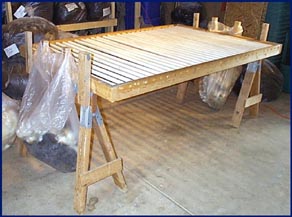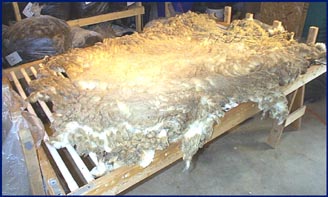
I thought we ought to show how fleeces are skirted and made ready for show or sale.
It all starts here at the skirting table. Well, actually it started on shearing day: February 18, 2001, but here is where the good stuff gets separated from the bad stuff.
The skirting table is 52" X 78" and has 30 PVC pipe tubes that float/rotate over wooden dowels. The openings between the tubes allow any second cuts to fall through. The floating tubes allow for movement of the fleece once on the table.










